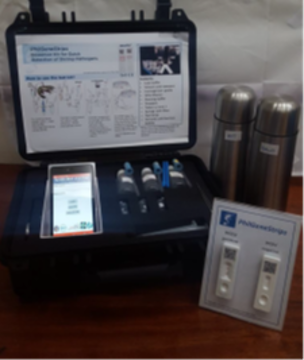
To address the decrease in shrimp production and adaptation to the fast-evolving demands of the new normal due to the COVID-19 pandemic, the University of San Agustin, in partnership with the Marmi Agricultural Corporation as its industry collaborator located in Silay City, developed a biofloc technology (BFT) protocol for the tank-based nursery production of white leg shrimp (P. vannamei) to ensure steady supply of seedstock and improve its growth and survival.
The BFT uses a microbial mat composed of aggregates of bacteria, algae, protozoa, detritus, and dead organic particles that help control the natural microbial activity. The application of this will provide natural food for the shrimp larvae as well as maintain the optimum water quality through recycling of nitrogenous wastes into more useful forms. Through this project, the viability of P. vannamei during the nursery production was assessed with the use of small circular tanks coupled with the incorporation of biofloc technology. Biofloc was produced and maintained using brown sugar as a carbon source.
After 30 days of culture, production data showed that shrimp attained an average body weight of 1.26 grams, a survival rate of 100% and a feed conversion rate (FCR) of 0.43. Furthermore, the different water quality parameters were within the optimum levels required for shrimp growth. Total Vibrios were also monitored which indicates the prevalence of non-pathogenic Vibrios in the nursery tanks. It was observed that the Vibrio populations were also lower in the biofloc groups compared with the non-biofloc.
In addition, 10 isolates were isolated as potential probionts from water of biofloc tanks which can displace potential bacterial pathogens and can regulate the levels of ammonia in the rearing water of shrimp.
With these results, it indicates that the use of small circular tanks with biofloc during the nursery production phase is feasible and can be incorporated in the grow-out culture. The industry collaborator can further increase their stocking cycles from 5-6 to 8-10 times per year which will later improve their shrimp production.


